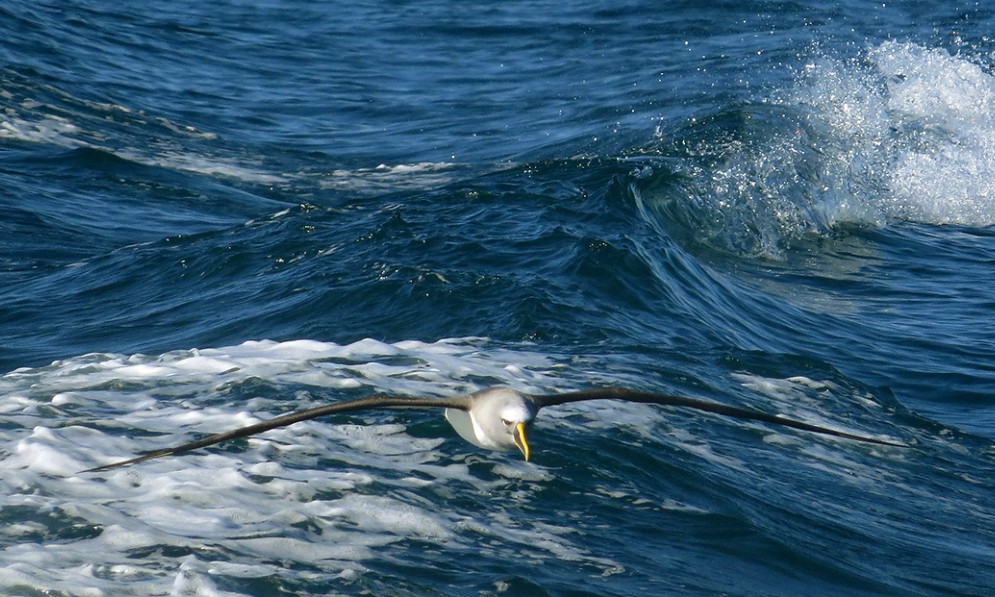Formats and related files:
Recreational fishing is a major threat to our seabirds. They can get caught on hooks, nets and other fishing gear.
The growing popularity and the sheer number of recreational fishers may be putting more pressure on seabirds but there are things you can do to help protect them when you're out on the water.
While most birds are released unharmed, certain species are already so threatened that even the death of a single bird really does matter, especially if it's an adult that can't return to land and feed its chick.

Bullers albatross. Credit: Karen Neal
Be seabird smart
- Fish tidy. Keep any bait on board in closed containers and maintain a clean deck, free of any fish wastes.
- Fish fast. When you do bait up, sink both your bait and burley fast and deep, preferably beyond the diving depth of birds (6 metres).
- Distract and deter birds. If birds do get attracted to your boat, try to create a safe, bird free zone around the boat. Some boaties use the deck hose to spray towards birds, some use a semi-empty milk bottle bobbing just above the water’s surface to act like a scarecrow and scare away birds.
- Reduce your plastic use. Other impacts on our seabirds include entanglement or ingestion of rubbish, particularly plastics, so please ensure all waste goes back home with you to be disposed of safely.
What to do if you catch a seabird
- Do not cut the line. A trailing line could cause future entanglement. Move the boat towards the bird or carefully reel the bird in and use a net to lift it onto the boat.
- Wrap a dry towel firmly around the bird. This will stop it from moving. Hold the beak shut but do not cover the nostrils of twist the beak.
- Watch out for beaks and feet. They are extremely sharp and fast!
- Cut or flatten the barb using pliers and feed the hook back through the wound.
- Carefully unwind or cut the line from entangled birds.
- If the bird has swallowed the hook, cut the line close to its entry point.
- If a bird is exhausted or waterlogged, place it in a loosely covered box to recover.
- Release a bird at water level.
Download our guide
Download a copy of our guide and keep it on your boat or in your fishing bag. It will show you how to avoid catching seabirds and what to do if you do. It even includes a guide to the seabirds of the Hauraki Gulf and Bay of Plenty.
Found an injured bird?
If you find a native bird that is injured, contact the Department of Conservation's emergency hotline (0800 DOC HOT or 0800 362 468).

